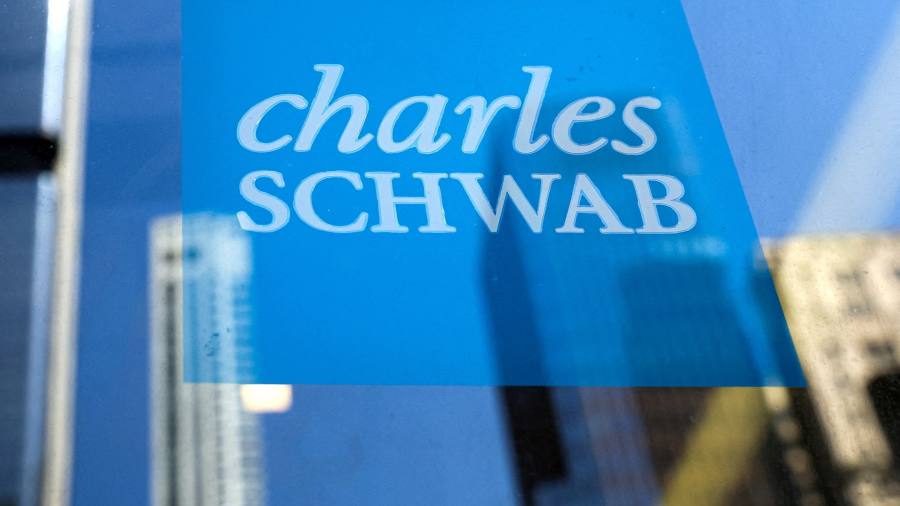Receive free Charles Schwab updates
We’ll send you a myFT Daily Digest email rounding up the latest Charles Schwab news every morning.
Deposit flight at Charles Schwab proved smaller than feared in its latest quarter, helping the broker and bank beat analysts’ expectations despite reporting a 28 per cent drop in profit.
The Texas-based group reported revenue of $4.7bn, down 9 per cent year on year, but above the $4.6bn expected by analysts polled by Refinitiv. Adjusted net income of $1.5bn came in ahead of the $1.3bn expected by analysts.
Deposits fell 7 per cent from the previous quarter to $304bn, and net interest income — the gap between what Schwab makes from lending and investing and what it pays to depositors — dropped 10 per cent year on year to $2.3bn.
The figures come after Schwab endured a rocky spring as it was caught up in the anxiety around regional lenders after the collapse of Silicon Valley Bank in March.
At the time, the market drew a parallel between Schwab’s business model and that of SVB. Both had large holdings of low- or no-interest deposits that had been invested in government securities. As interest rates rose, Schwab’s customers began moving their deposits to obtain higher returns and its securities holdings suffered paper losses.
However, Schwab’s issues were not nearly as extreme as SVB’s: much of the deposit money moved into its own money market funds, and it was able to use borrowed money to repay depositors rather than having to sell securities at a loss.
Investors appeared to warm to the results, and pushed Schwab shares more than 8 per cent higher in pre-market trading on Tuesday morning, although they remain down more than 25 per cent since the start of the year.
Chief executive Walter Bettinger said a “fog” of concern about rising interest rates was “masking the extraordinary progress we are making as a firm”. He told analysts on Tuesday that the company expected to realise an additional $500mn in savings, double what it had predicted, from the full integration of Ameritrade customers, which it moved on to Schwab’s platform in May.
Chief financial officer Peter Crawford said in a statement that there had been “a continued and substantial deceleration in the daily pace of cash outflows versus prior months” in June, adding that the group expected to shift back to cash inflows before the end of the year.
Schwab was on track to maintain its target of 5 to 7 per cent annualised growth in net new assets, president Rick Wurster told analysts.
Still, pre-tax margins were down sharply year on year, to 36.3 per cent in 2023 from 44.6 per cent last year. Investors also remain concerned about how the business will be affected by regulatory plans to tighten the capital requirements for banks of Schwab’s size.
Read the full article here




